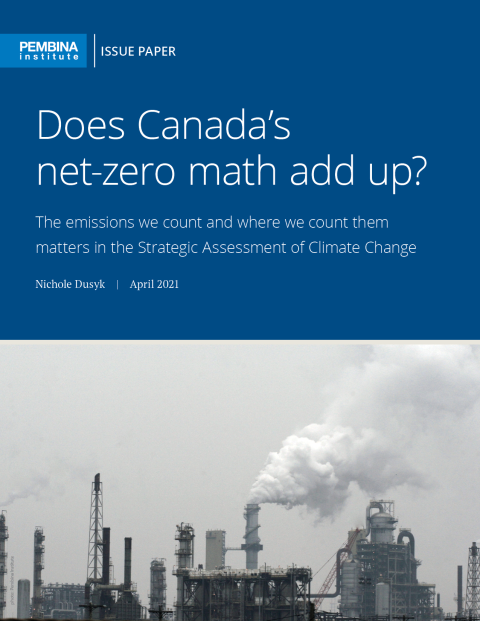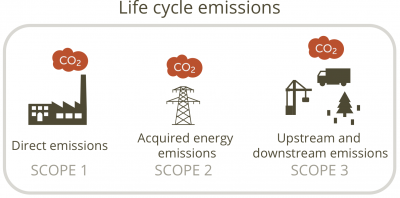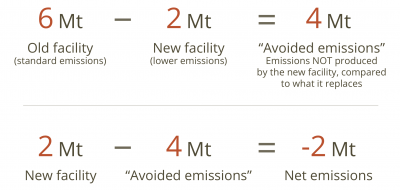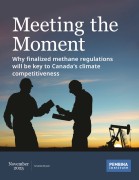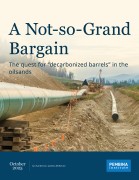The cornerstone of the federal government’s climate agenda is the commitment to achieve net-zero greenhouse gas emissions by 2050 to help limit warming to 1.5 degrees Celsius to prevent the most catastrophic impacts of climate change. Implementing this commitment requires defining and operationalizing net-zero in legislation, programs and plans, and decision-making criteria. This was first done in the Strategic Assessment of Climate Change (SACC), a federal government policy document that sets out the parameters for assessing climate change in federal project reviews.
On the face of it, calculating net-zero emissions should be a simple matter of balancing a budget. Both sides of the ledger have to be equal: On one side we have the amount of carbon pollution we’re still emitting, and on the other the amount of carbon pollution we’re removing from the atmosphere through nature-based methods (managed forests, for example) or technology (carbon capture and storage, for example). The carbon pollution being removed “neutralizes” the carbon still being emitted.
The math seems simple. But it’s not, because the equation Canada is working with is flawed. Simply put, Canada’s definition of net-zero doesn’t add up. Because Canada’s definition of net-zero includes “avoided” emissions and does not require consideration of lifetime emissions when deciding whether a project is in the public interest, both sides of the ledger won’t necessarily be equal.
Why is this so important? The federal government recently announced its plan to get Canada to net-zero by 2050. If that plan rests on a faulty definition of net-zero it could create loopholes that dilute the effectiveness of climate policy. A robust definition of net-zero, on the other hand, will not only ensure we are doing our fair share to limit global warming by 2050, but also that we are on an achievable path toward that goal. Reaching net-zero emissions by 2050 is the method by which we’ll succeed in limiting warming to 1.5 degrees Celsius. A climate-safe world is only possible with a commitment to immediate, deep emissions reductions for all new and existing high-carbon projects in Canada and around the world.
The federal government’s net-zero equation
Equation 1. Net GHG emissions at the project level equals direct GHG emissions plus acquired energy GHG emissions (e.g. emissions from purchased electricity, steam, heat or cooling), minus captured and stored CO2, offset credits, and avoided domestic GHG emissions (e.g. if a project replaces a higher-emitting one, the difference between the amount of emissions).
This equation does not consider full life cycle emissions. Because Canada’s definition of net-zero draws a boundary around a project when determining what to count, it includes emissions calculated at the facility or project level (scope 1 and 2), but not the vast majority of emissions associated with the life cycle of the product (scope 3). As Canada moves to put structures in place to achieve net-zero emissions by 2050, we have the difficult task of accounting for all emissions, regardless of where or when emitted. Only with clear and comprehensive accounting of the emissions new infrastructure will lock into place — at home and abroad, throughout the life cycle of the project — will we be able to ensure that infrastructure is compatible with our climate commitments. This isn’t just theoretical. We have very real decisions to make in the near future on energy and industrial infrastructure that will shape Canada’s decarbonization options for decades to come. What we count matters.
Also problematic, Canada’s definition includes a variable called “avoided emissions.” This is an attempt to recognize that a new project (such as a gas-fired electricity generating station) may replace an existing facility (such as a coal-fired plant) that had higher emissions — in other words, according to the SACC, avoided domestic emissions are those “that are reduced or eliminated in Canada as a result of the [new] project,” when the emissions reduction results “from the replacement of a high-emitting facility with a lower-emitting facility.”
The inclusion of “avoided domestic GHG emissions” may seem fair and reasonable at first glance. But let’s do the math all the way through. Imagine a new facility has 1.5 million tonnes (Mt) of direct GHG emissions per year, 0.5 Mt per year of emissions from acquired energy, and does zero carbon capture and purchases zero carbon offsets. Those 2 Mt of emissions mean it would not be a net-zero emissions facility. Now imagine this facility replaces an older one emitting 6 Mt annually. Because the net-zero equation allows for the subtraction of “avoided domestic GHG emissions,” suddenly this facility that emits 2 Mt of GHG emissions is calculated on paper as having -2 Mt of annual GHG emissions:
Under the federal government’s flawed definition of net-zero, this facility could claim to have net-negative emissions. What about those two million tonnes of very real GHG emissions — where are they counted? The problem here is that creative accounting does not work on the atmosphere. “Avoided” emissions cannot cancel out actual emissions, which still need to be counted in project decision-making with a clear plan for mitigation.
The net-zero equations Canada needs
Rather than the single, net-zero equation in the SACC, we recommend two equations. First, we need a net-zero equation calculated annually that omits “avoided” domestic emissions. This would be used to determine mitigation obligations for the proponent and, to be deemed credible, it would need to decline in line with Canada’s climate change targets. This equation would look like this:
Equation 2. Net GHG emissions at the project level equals direct GHG emissions plus the balance of emissions from acquired/exported energy, minus captured and stored CO2, and offset credits.
Second, we need a calculation showing all of the emissions over the lifetime of the project which should be used in determining whether a project is in the public interest. This second equation would look like this:
Equation 3. Lifetime GHG emissions equals lifetime direct emissions, plus lifetime balance of emissions from acquired/exported energy plus direct and indirect construction and decommissioning emissions plus lifetime upstream, and downstream emissions minus lifetime emissions captured and stored, and lifetime emissions offset credits.
Recommendations for science-based climate change assessment
To maximize our chances of avoiding catastrophic climate change, the following seven conditions are essential when implementing the Strategic Assessment of Climate Change. This second equation would look like this:
- All high-carbon projects proposed in Canada must be assessed under the Impact Assessment Act.
- All high-carbon projects, including and especially those not required to create a net-zero plan, must commit to continuously reduce emissions throughout their lifetime in line with government interim targets and budgets.
- Canada’s net-zero calculation should not include avoided emissions.
- Lifetime emissions must be considered when deciding whether a project is in the public interest.
- Mitigation requirements on projects should result in absolute emissions reductions.
- The need for, and alternatives to, specific projects should always be assessed, even if projects can achieve the goal of net-zero emissions by 2050.
- Where appropriate, projects should strive to reach net-negative emissions.

